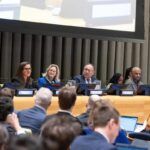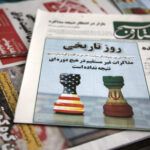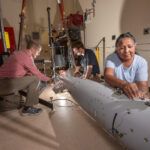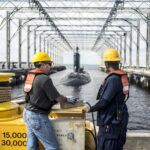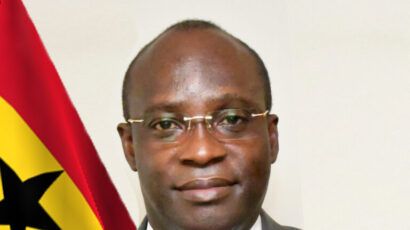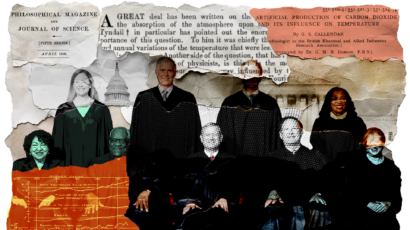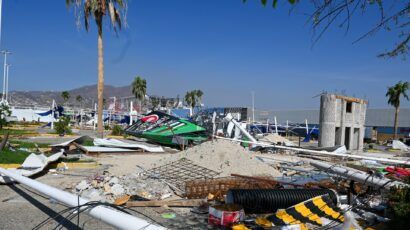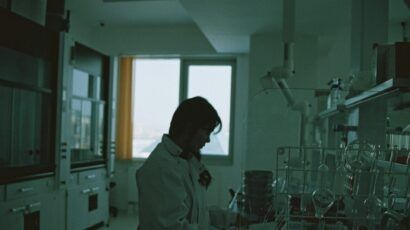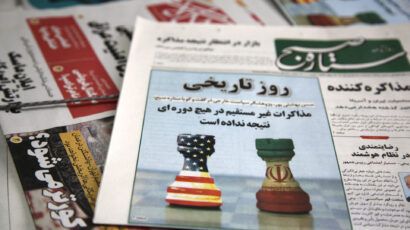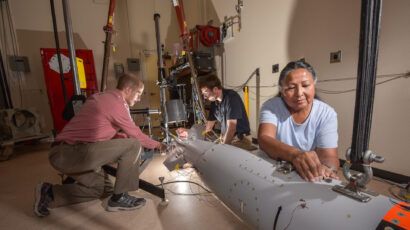Nuclear security’s top priority
By Fissile Materials Working Group | June 12, 2012
In the past two decades, at least two terrorist groups have made serious attempts at obtaining nuclear weapons or the nuclear material needed to make them. They won’t be the last. Foiling terrorists willing to inflict unlimited damage requires the international community to prioritize the nuclear stocks that pose the greatest risks and take immediate steps to eliminate or secure them. The stocks of nuclear weapons or weapons-usable nuclear material that are most likely to fall into terrorist hands today exist in Russia, Pakistan, and countries with research reactors that use large quantities of highly enriched uranium (HEU) — like Belarus, South Africa, and Japan. The 2012 Nuclear Security Summit in Seoul made some progress toward eliminating dangerous HEU stocks, but it did not alter the security trajectory in either Russia or Pakistan. Preventing terrorists from acquiring nuclear weapons or weapons-usable nuclear material in all countries remains the world’s most urgent security challenge.
Russia. With the help of billions of US dollars, Russia has dramatically improved security and accounting measures for its nuclear weapons and materials since the collapse of the Soviet Union. But significant weaknesses remain. Russia’s main challenge is that it must secure an immense and sprawling nuclear complex. Russia has almost 200 buildings with weapons-usable nuclear material, almost 50 permanent nuclear weapons storage sites, and dozens more temporary nuclear weapons storage sites. The country’s fleet of some 60 research reactors that use HEU now represents almost half of all the research reactors using HEU in the world, including two-thirds of the most dangerous types — critical assemblies and pulse reactors — which contain large amounts of weapons-grade HEU. Each cache presents an opportunity for theft; there is simply no scientific or military justification for such a vast number of facilities.
As a participant in the summit, Russia reaffirmed the goal of global HEU minimization, but its national statement did not make consolidation within Russia a priority. Although it drew attention to a joint US-Russia project to assess the feasibility of converting six research reactors in Moscow from highly enriched uranium to low-enriched uranium, Russia deferred any decision on conversion pending “additional assessment of [conversion’s] economic effect” and made no further mention of reducing the number of locations with HEU or separated plutonium. Instead, Russia’s statement proclaimed, “There are no nuclear materials that would cause concern due to their level of physical protection” — a common Russian retort to suggestions that the country could quickly improve security by simply reducing the number of stocks it must protect.
Despite this bristling, however, the preamble of Russia’s statement does suggest that Russia might be willing to consider consolidation of its research-reactor fleet before the next summit — if an economic and business case can be made. Its statement opened by declaring Russia’s “intention to develop nuclear power as a strategic direction for the development of the country.” By providing training to future nuclear power plant operators and testing mock-ups of new reactor designs, research reactors will play an important role in Russia’s nuclear future. Recognizing this, Russia should undertake a strategic review of its research-reactor needs in the context of its nuclear power development plans. Such a study would inevitably conclude that all — or all but a few — of its HEU-fueled research reactors could be shut down. In the 1990s, what was then Russia’s Ministry of Atomic Energy agreed that such a study was needed and the ministry even agreed to undertake it — but it was never done. Such a review would leave Russia’s nuclear weapons complex untouched, but it would nonetheless lead to a crucial downsizing of Russia’s civilian HEU stocks before the next security summit.
Pakistan. Compared with Russia, Pakistan maintains a very small — though quickly growing — nuclear stockpile in a small number of locations, with extensive security measures. But, with Al Qaeda’s core leadership along with a range of highly capable terrorist groups around the region with links to elements of the Pakistani state, Pakistan’s nuclear assets face a much greater threat from terrorists seeking nuclear weapons than does any other stockpile on Earth. While Pakistan takes nuclear security seriously, its first priority is to protect its nuclear stocks from Indian strikes or US seizure. It is largely resistant to cooperative nuclear security efforts, as indicated by its prickly national statement in Seoul, which reminded summit participants that nuclear security is a “national responsibility” and that “space for cooperation” should come via “voluntary national actions.” It is likely that any improvements to Pakistan’s nuclear stocks before the next summit will come through the expansion of ongoing secret US-Pakistan cooperation on nuclear security.
Research reactors. More than 120 research reactors around the world use highly enriched uranium, or HEU, and many of these facilities exist in serene academic locations that are a far cry from the insurgent-ridden streets of Pakistan. Consequently, research reactors often have only minimal security measures in place. The research reactors that pose the highest risks are those with enough HEU for the simplest gun-type nuclear bomb — which would be the easiest for terrorists to build. Such a bomb requires 50-60 kilograms of 90 percent-enriched HEU, and more if the enrichment level is lower. Spurred by the summit process, programs led by the United States, Russia, and the International Atomic Energy Agency are making substantial progress in reducing the number of these facilities outside Russia. At this year’s summit, for example, Ukraine announced that it had delivered on its 2010 Nuclear Security Summit pledge to eliminate all but a few grams of the HEU on its soil, including some 75 kilograms of weapons-grade HEU powder from a research center in Kharkiv. This was a great success. But challenges remain. Japan, South Africa, and Belarus all have civilian facilities that contain more than enough HEU for an improvised gun-type device.
Japan. Japan stores hundreds of kilograms of HEU metal on its soil. Presented at the summit, Japan’s national statement indicated publicly for the first time that the country had upgraded security at its nuclear sites, including a much-needed increase in on-site armed guards. The increased cost of this security may even provide incentive for Japan to consider shutting down HEU reactors by the 2014 summit or at least switching to low-enriched uranium fuels. This outcome should be diligently pursued by diplomats in preparatory negotiations.
South Africa. South Africa made no specific pledge in Seoul about eliminating the hundreds of kilograms of HEU from its dismantled nuclear weapons program, which are stored at a site near Pretoria that suffered an unsolved attack by two armed teams in 2007. Indeed, South African President Jacob Zuma’s statement at the summit’s working dinner explicitly declared his country’s right to possess HEU and reiterated the country’s position that nuclear security efforts must not be divorced from wider discussions on nuclear disarmament. However, US-funded upgrades at South Africa’s HEU facility should be complete before the next summit, and bilateral talks on downblending South Africa’s HEU, which could be used to make a low-enriched uranium fuel worth millions of dollars, are ongoing.
Belarus. Finally Belarus, which was not a summit participant, agreed to eliminate all the HEU on its soil with US help in 2010. But 100 kilograms of fresh HEU still remain in the country; Belarus froze its cooperation with the United States following US sanctions in 2011. Talks focused on renewing this arrangement are continuing, as are security upgrades for the HEU site.
As the international community moves toward the 2014 Nuclear Security Summit — which may well be the last — it must overcome the obstacles to action and build a lasting architecture of cooperation. To do that, the world needs: (1) baseline standards of nuclear security that should be in place wherever HEU and separated plutonium exist; (2) a serious effort to reduce the number of locations with nuclear weapons, HEU, and separated plutonium; (3) some form of transparency to build confidence that states are fulfilling their nuclear security commitments; and (4) a means for continuing high-level discussions after the nuclear security summit process ends. As nations around the globe pivot from the current four-year effort to a sustained focus on nuclear security for the long haul, states must not lose sight of the most urgent security imperatives. Prioritization of high-risk stocks should be a feature of international nuclear security efforts as long as stocks of nuclear material and weapons exist.
This column was written by Eben Harrell, a member of the Fissile Materials Working Group. Harrell is a research associate at the Project on Managing the Atom at Harvard University’s Belfer Center for Science and International Affairs. This column is based on the Belfer Center report “Progress on Securing Nuclear Weapons and Material: The Four-Year Effort and Beyond.”
Together, we make the world safer.
The Bulletin elevates expert voices above the noise. But as an independent nonprofit organization, our operations depend on the support of readers like you. Help us continue to deliver quality journalism that holds leaders accountable. Your support of our work at any level is important. In return, we promise our coverage will be understandable, influential, vigilant, solution-oriented, and fair-minded. Together we can make a difference.
Topics: Columnists, Nuclear Weapons


